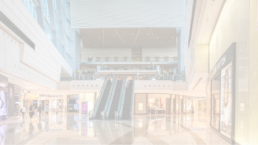Australian Shopfitting 101: Using Retail Shop Fitout to Attract Millennials and Gen Z Customers
In the ever-evolving retail landscape, the importance of captivating the attention of Millennials and Generation Z cannot be overstated. With their unique preferences, values, and spending habits, these demographic cohorts are reshaping the retail industry. Shopfitting can be a strategic tool that retailers employ to engage these tech-savvy and socially conscious consumers.

Beyond Aesthetics
Shopfitting, often referred to as the process of designing and fitting out retail spaces, goes beyond mere aesthetics. It's a holistic approach aimed at creating an immersive and memorable shopping experience. In the context of attracting Millennials and Gen Z customers, shopfitting becomes even more critical. Let's delve into some key strategies and considerations for Australian retailers looking to appeal to these demographics through their shop fitouts.
Understanding the Millennial and Gen Z Mindset
Before diving into the specifics of shopfitting, it's essential to grasp the psyche of Millennials and Gen Z. These cohorts prioritize authenticity, sustainability, and social responsibility. They crave experiences over material possessions and expect seamless integration of online and offline channels. Understanding these values is paramount in tailoring shop fitouts to resonate with them.
Creating Immersive Experiences
Millennials and Gen Z value experiences that transcend traditional retail transactions. Therefore, shopfitting should focus on creating immersive environments that tell a story and foster emotional connections. Incorporating elements like interactive displays, sensory experiences, and pop-up installations can elevate the shopping journey from mundane to memorable.
Seamless Integration of Technology
Technology is second nature to Millennials and Gen Z, making its seamless integration a non-negotiable aspect of shopfitting. From augmented reality fitting rooms to mobile checkout options, leveraging technology enhances convenience and engagement. Furthermore, incorporating digital signage and interactive displays can provide personalized recommendations, catering to the individual preferences of tech-savvy shoppers.
Embracing Sustainability
Sustainability isn't just a buzzword for Millennials and Gen Z; it's a core value that influences their purchasing decisions. Australian retailers can appeal to these environmentally conscious consumers by prioritizing sustainable materials and practices in their shop fitouts. From eco-friendly fixtures and lighting to upcycled decor elements, every aspect of the retail space should reflect a commitment to sustainability.
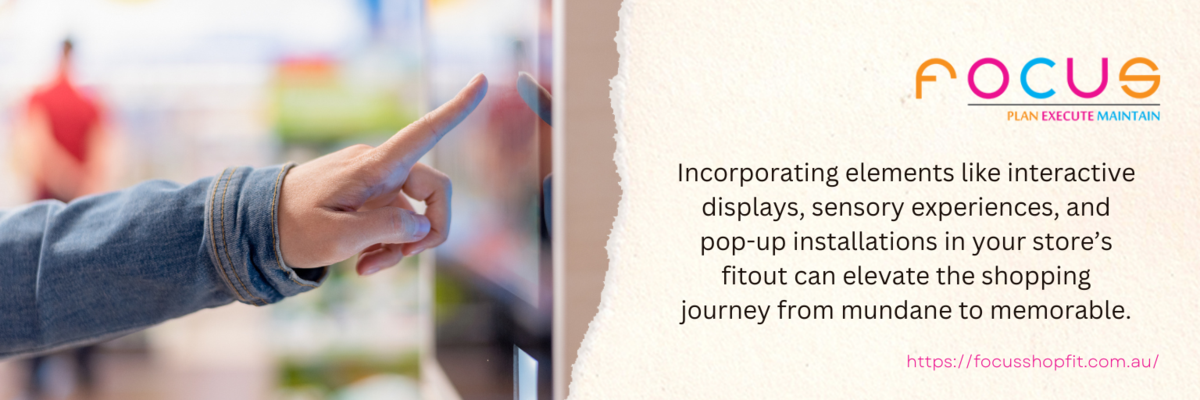
Community-Centric Spaces
Millennials and Gen Z crave authenticity and community connection. Australian retailers can capitalize on this by designing shop fitouts that double as community hubs. Incorporating communal seating areas, hosting workshops, and partnering with local artisans can foster a sense of belonging and create opportunities for meaningful interactions beyond mere transactions.
Personalization and Customization
In a world inundated with choices, personalization is key to capturing the attention of Millennials and Gen Z. Australian retailers can leverage shopfitting to create personalized shopping experiences tailored to individual preferences. From customizable product displays to interactive styling stations, incorporating elements of personalization empowers shoppers and fosters brand loyalty.
Omnichannel Integration
In the age of omnichannel retail, the lines between online and offline shopping have blurred. Australian retailers must seamlessly integrate their physical shop fitouts with their digital presence to cater to the preferences of Millennials and Gen Z. This entails offering services like click-and-collect, in-store digital experiences, and consistent branding across all touchpoints.
The Power of Influencer Marketing
Millennials and Gen Z often look to social media influencers for inspiration and validation. Australian retailers can harness the power of influencer marketing by designing shop fitouts that are Instagram-worthy and shareable. Incorporating visually appealing backdrops, unique design elements, and interactive installations can encourage user-generated content and amplify brand reach.
Agility and Adaptability
The retail landscape is in a constant state of flux, driven by rapidly evolving consumer trends and technological advancements. Australian retailers must embrace agility and adaptability in their shopfitting strategies to stay ahead of the curve. This entails regularly reassessing and refining shop fitouts to align with shifting consumer preferences and market dynamics.

The Right Shopfitting Strategies in Place
Shopfitting plays a pivotal role in attracting Millennials and Gen Z customers. By understanding their values, preferences, and behaviors, retailers can design shop fitouts that resonate with these demographic cohorts on a deeper level. From creating immersive experiences to embracing sustainability and technology, the key lies in crafting retail spaces that transcend mere transactions and foster meaningful connections. With the right shopfitting strategies in place, Australian retailers can position themselves at the forefront of the ever-changing retail landscape and capture the hearts and wallets of Millennials and Gen Z.
Australian Shopfitting 101: Could a Fresh Look Address Dwindling Foot Traffic and Also Bring in New Customers?
In Australia, where the retail sector faces challenges like anywhere else, the role of shopfitting becomes even more pronounced. As businesses grapple with the impact of digital transformation and changing consumer preferences, the question arises: Could a fresh look through effective shopfitting be the remedy for dwindling foot traffic and the key to attracting new customers?

Designing Retail Spaces
Shopfitting, often overlooked by the untrained eye, encompasses the art and science of designing retail spaces to enhance the customer experience, optimize functionality, and ultimately drive sales. In the context of Australian retail, where competition is fierce and consumer expectations are high, the importance of thoughtful shopfitting cannot be overstated.
One of the primary challenges facing Australian retailers today is the shift towards online shopping. The convenience and variety offered by e-commerce platforms have reshaped consumer behavior, leading to a decline in foot traffic in brick-and-mortar stores. In this digital age, where virtual storefronts compete for attention alongside traditional shops, retailers must leverage every tool at their disposal to create compelling physical spaces that draw customers in and keep them coming back.

Reimagining Store Layouts
This is where effective shopfitting comes into play. By reimagining store layouts, optimizing product displays, and incorporating innovative design elements, retailers can breathe new life into their spaces and reignite customer interest. From eye-catching window displays to interactive product demonstrations, shopfitting offers endless possibilities for engaging shoppers and providing them with memorable experiences.
But shopfitting is not just about aesthetics; it's also about functionality. A well-designed store layout can improve traffic flow, minimize congestion, and make it easier for customers to find what they're looking for. By strategically positioning merchandise and signage, retailers can guide shoppers through the store and encourage them to explore different sections, increasing the likelihood of making a purchase.
Differences and Nuances
In Australia, where the retail landscape is as diverse as the country itself, shopfitting must also take into account regional differences and cultural nuances. What works in Sydney may not necessarily resonate with shoppers in Perth, Melbourne, Adelaide, Darwin, Sydney, Canberra, or Brisbane. Therefore, retailers need to tailor their shopfitting strategies to the specific needs and preferences of their target market.
A fresh look through shopfitting can make a big difference in addressing dwindling foot traffic and attracting new customers. By investing in their physical spaces and creating environments that resonate with customers, Australian retailers can not only survive but thrive in an increasingly competitive market.
Of course, effective shopfitting is not a one-size-fits-all solution, and what works for one retailer may not work for another. It requires careful planning, creativity, and a deep understanding of both the brand and the target audience. Moreover, it's an ongoing process, requiring continuous evaluation and adaptation to stay relevant in an ever-changing retail landscape.

Effective Shopfitting
Australian shopfitting is not just about aesthetics; it's about creating immersive, engaging, and functional retail environments that inspire customers to explore, interact, and ultimately make a purchase. By embracing the power of effective shopfitting, Australian retailers can breathe new life into their businesses, address dwindling foot traffic, and attract new customers in the process. So, the next time you walk into a store and find yourself captivated by its ambiance and layout, remember that behind the scenes, there's a team of shopfitters working tirelessly to create that magical experience.
Australian Shopfitting 101: How Lighting Design in your Store Fitout can Elevate your Retail Space
In retail, where every square meter counts and every customer interaction is crucial, shopfitting holds significant importance. Shopfitting encompasses the intricate process of designing and fitting out retail spaces to optimize functionality, aesthetics, and ultimately, sales. Among the myriad elements that contribute to a successful retail environment, lighting design stands out as a powerful tool for transforming the ambiance, highlighting merchandise, and creating an immersive shopping experience.

Shopfitting is paramount for businesses striving to stay ahead of the curve. Whether you're revamping an existing store or embarking on a new retail venture, understanding the principles of lighting design and its impact on your store fitout can make all the difference in elevating your retail space and captivating your audience.
The Power of Lighting Design
Imagine walking into a dimly lit store versus one bathed in warm, inviting light. The difference in ambiance is palpable, setting the tone for the entire shopping experience. Lighting design is not merely about illuminating a space; it's about crafting an atmosphere, guiding customers through your store, and accentuating your merchandise. In shopfitting, lighting serves multiple purposes:
- Highlighting Products: Effective lighting draws attention to key products, showcasing them in the best possible light—both literally and figuratively. Whether it's a spotlight on a featured item or subtle accent lighting to create visual interest, strategic placement of lights can significantly influence purchasing decisions.
- Creating Ambiance: Lighting sets the mood and ambiance of your store, shaping the overall experience for customers. From bright, energetic lighting in active retail areas to soft, ambient lighting in relaxation zones, the right lighting scheme can evoke emotions and enhance the shopping journey.
- Improving Visibility: Good lighting isn't just about aesthetics; it's also about practicality. Proper illumination improves visibility, making it easier for customers to navigate your store, locate products, and read labels or signage. Inadequate lighting, on the other hand, can lead to frustration and detract from the overall shopping experience.
- Enhancing Brand Identity: Your store's lighting design should reflect your brand identity and values. Whether you're aiming for a minimalist, modern aesthetic or a cozy, rustic ambiance, lighting plays a crucial role in reinforcing your brand image and resonating with your target audience.
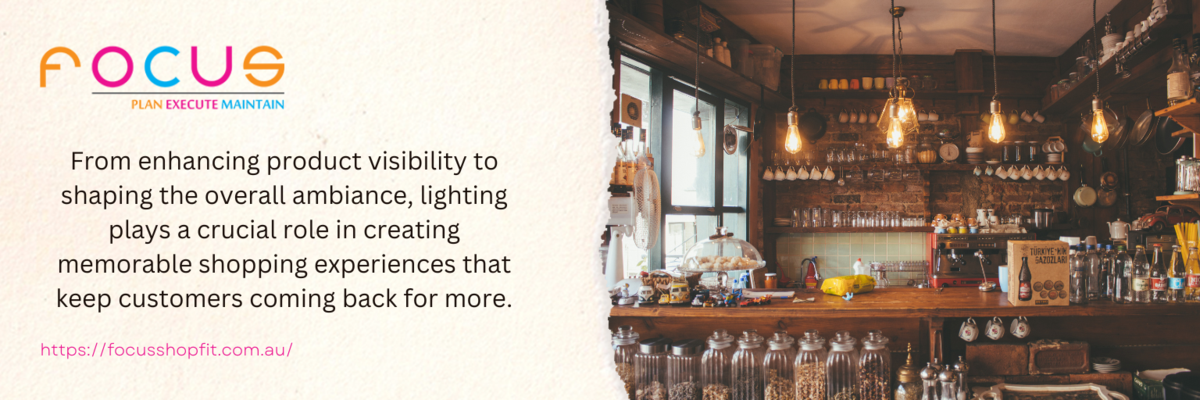
Key Considerations in Lighting Design for Retail Spaces
When embarking on a store fitout or renovation project, careful consideration of lighting design is essential. Here are some considerations to keep in mind when picking lighting for your store:
- Natural vs. Artificial Light: While natural light is often prized for its ability to create a sense of openness and connection to the outdoors, it's not always feasible to rely solely on daylight, especially in indoor retail environments. A well-balanced combination of natural and artificial lighting can maximize energy efficiency while ensuring consistent illumination throughout the day.
- Color Temperature and CRI: The color temperature of light (measured in Kelvin) and its Color Rendering Index (CRI) have a significant impact on how merchandise appears to customers. Warm, yellow-toned light can create a cozy, inviting atmosphere, while cooler, blue-toned light may convey a sense of brightness and freshness. Understanding the interplay between color temperature and CRI is crucial for achieving the desired ambiance and accurately representing product colors.
- Layered Lighting: Effective lighting design often involves layering different types of lighting to achieve depth and dimensionality. This may include ambient lighting to establish a base level of illumination, task lighting to highlight specific areas or products, and accent lighting to add drama and focal points. By layering lighting sources strategically, you can create visual interest and guide the customer's eye throughout the space.
- Flexibility and Adaptability: Retail environments are constantly evolving, with changing product displays, seasonal promotions, and shifting customer preferences. A well-designed lighting system should be flexible and adaptable, allowing for easy adjustments to accommodate varying merchandising layouts and promotional campaigns.
- Energy Efficiency: In an era of heightened environmental consciousness, energy efficiency is a key consideration in lighting design. LED lighting technology has revolutionized the retail lighting landscape, offering significant energy savings, long lifespans, and versatility in color temperature and intensity. By incorporating energy-efficient lighting solutions into your store fitout, you can reduce operating costs and minimize your environmental footprint.
Illuminating the Path to Retail Success
The importance of lighting design in retail store fitouts cannot be overstated. From enhancing product visibility to shaping the overall ambiance, lighting plays a crucial role in creating memorable shopping experiences that keep customers coming back for more. By understanding the principles of lighting design and leveraging innovative lighting solutions, retailers can elevate their retail spaces, strengthen their brand identity, and ultimately, drive sales and customer loyalty.

As you embark on your own shopfitting journey, remember that lighting is not just a practical necessity but also a powerful tool for storytelling, brand expression, and creating emotional connections with your audience. So, dare to dream big, experiment with different lighting techniques, and let your retail space shine bright as a beacon of style, innovation, and inspiration in the Australian retail landscape.
Australian Shopfitting 101: Your Shop Fit-Out Checklist
Shopfitting is a crucial aspect of retail business in Australia. Whether you're starting a new venture or revamping an existing one, getting the shop fit-out right is essential for creating a welcoming and efficient space for both customers and staff. From layout design to fixtures and branding elements, every detail counts. In this guide, we'll delve into the essentials of Australian shopfitting, providing you with a comprehensive checklist to ensure your shop fit-out is a success.

- Planning and Design:
Before diving into the physical aspects of shopfitting, thorough planning, and design are paramount. This stage involves understanding your target market, brand identity, and desired customer experience. Consider the following:
- Market Research: Analyze your target demographic, their preferences, and shopping habits.
- Brand Identity: Define your brand's personality, values, and how you want it to be perceived by customers.
- Store Layout: Plan an efficient layout that facilitates easy navigation and highlights key products or areas.
- Design Concept: Develop a cohesive design concept that aligns with your brand and enhances the overall shopping experience.
- Compliance and Regulations:
In Australia, shopfitting projects must comply with various regulations and standards to ensure safety and accessibility for all customers. Familiarize yourself with relevant regulations, including:
- Building Codes: Adhere to building codes and regulations concerning structural integrity, fire safety, and accessibility.
- Occupational Health and Safety: Implement occupational health and safety measures to ensure a safe working environment for employees and contractors.
- Accessibility: Ensure your shop fit-out is accessible to customers with disabilities by incorporating features like ramps and handrails.
- Fixtures and Fittings:
Choosing the right fixtures and fittings is crucial for optimizing space utilization and showcasing your products effectively. Consider the following elements:
- Shelving and Display Units: Select shelving systems and display units that accommodate your merchandise and enhance visual appeal.
- Counters and Cash Registers: Choose functional counters and cash registers that facilitate smooth transactions and customer interaction.
- Lighting: Install adequate lighting to highlight products and create an inviting atmosphere.
- Flooring and Ceilings: Opt for durable flooring materials and ceiling treatments that complement your design concept and withstand heavy foot traffic.
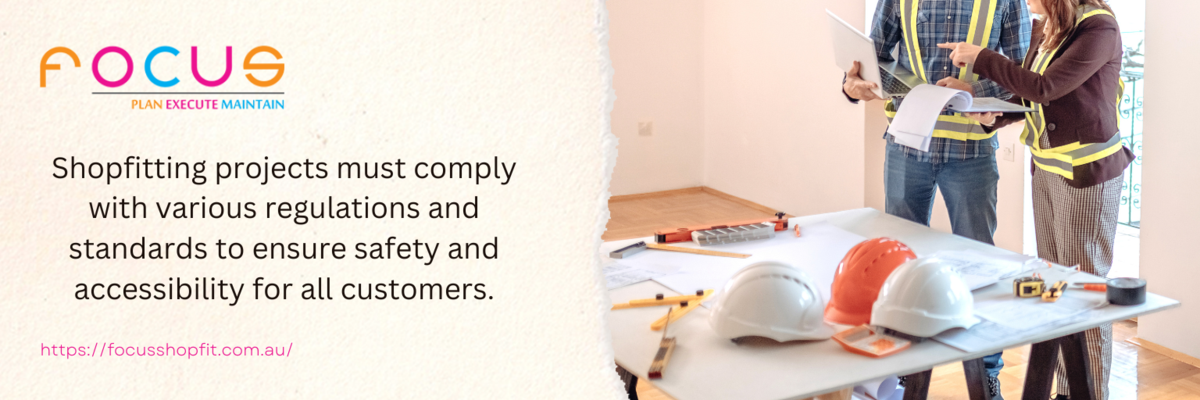
- Branding and Signage:
Branding plays a significant role in attracting customers and conveying your brand message. Incorporate branding elements seamlessly into your shop fit-out, including:
- Signage: Design eye-catching signage that reflects your brand identity and helps customers locate your store.
- Graphics and Decor: Use graphics, murals, and decor elements to enhance the ambiance and reinforce your brand image.
- Logo and Brand Colors: Incorporate your logo and brand colors into various aspects of your shop fit-out to create a cohesive look and feel.
- Technology Integration:
Incorporating technology into your shop fit-out can enhance efficiency, streamline operations, and improve the overall customer experience. Consider integrating the following tech solutions:
- Point-of-Sale (POS) Systems: Invest in a modern POS system that offers features like inventory management, sales analytics, and customer relationship management.
- Digital Signage: Utilize digital signage for dynamic content displays, promotions, and product information.
- Security Systems: Install CCTV cameras, alarm systems, and access control systems to safeguard your premises and inventory.
- Installation and Construction:
Once all planning and preparation are complete, it's time to execute the shop fit-out project. Hire experienced contractors and tradespeople to ensure quality craftsmanship and timely completion. Coordinate closely with your team throughout the installation process, addressing any issues or changes promptly.
- Testing and Quality Assurance:
Before opening your doors to customers, conduct thorough testing and quality assurance checks to ensure everything is functioning as intended. Test equipment, lighting, signage, and POS systems to identify and resolve any issues before launch day.
- Launch and Maintenance:
Congratulations! Your shop fit-out is complete, and it's time to unveil your new retail space to the world. Plan a grand opening event to attract and gain customers. Beyond the launch, prioritize ongoing maintenance to keep your shop fit-out in top condition. Schedule regular inspections, repairs, and updates as needed to ensure a positive shopping experience for your customers.

Wide Range of Considerations
Shopfitting encompasses a wide range of considerations, from initial planning and design to final installation and maintenance. By following this comprehensive checklist, you can ensure that your shop fit-out meets all regulatory requirements, aligns with your brand identity, and provides an exceptional shopping experience for your customers. With careful attention to detail and strategic execution, your retail space can become a thriving destination for shoppers across Australia.
Australian Shopfitting 101: Things to Consider Before You Engage a Shopfitter
First impressions count. When customers step into your store, they should be met with an environment that not only showcases your products but also reflects your brand identity. This is where the art of shopfitting comes into play. Shopfitting is more than just arranging shelves and counters; it's about creating an inviting space that maximizes functionality and enhances the overall shopping experience. In Australia, where the retail landscape is vibrant and diverse, finding the right shopfitter is crucial. But before you engage a shopfitter, there are several factors to consider.
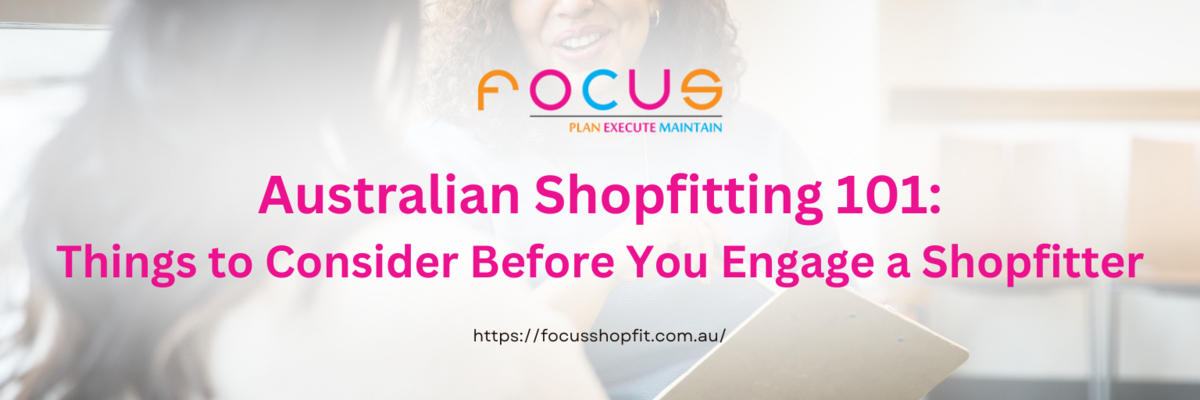
Understanding Your Needs
Before diving into the process of selecting a shopfitter, it's essential to have a clear understanding of your needs and objectives. What are your brand values? Who is your target audience? What image do you want to convey through your store? Answering these questions will help you articulate your requirements to potential shopfitters and ensure that their vision aligns with yours.
Experience and Expertise
When entrusting someone with the task of transforming your retail space, experience matters. Look for shopfitters with a proven track record of success in the industry. Consider their portfolio and past projects to gauge their expertise and craftsmanship. A shopfitter who has worked with similar businesses or within your niche is more likely to understand your unique requirements and deliver tailored solutions.
Compliance and Regulations
Australian regulations and standards govern every aspect of commercial construction, including shopfitting. It's imperative to choose a shopfitter who is well-versed in local regulations and compliance requirements. From building codes to occupational health and safety standards, adherence to these regulations not only ensures the safety of your customers and staff but also protects you from potential legal liabilities.
Quality of Materials and Workmanship
The durability and aesthetics of your store fixtures depend largely on the quality of materials and workmanship. When evaluating shopfitters, inquire about the materials they use and the suppliers they source from. Opting for high-quality materials may entail a higher initial investment, but it pays off in the long run through reduced maintenance costs and prolonged lifespan. Similarly, skilled craftsmanship is essential for achieving the desired finish and functionality of your shopfitting elements.
Budget and Timeline
Establishing a realistic budget and timeline is essential for a successful shopfitting project. Discuss your budget constraints with potential shopfitters upfront to ensure that their proposals align with your financial parameters. Similarly, set clear deadlines and milestones to keep the project on track and avoid any delays or cost overruns. A reputable shopfitter will provide transparent pricing and realistic timelines based on the scope of work involved.

Collaborative Approach
Effective communication and collaboration are key to a smooth shopfitting process. Choose a shopfitter who values your input and actively involves you in the decision-making process. From conceptual design to final installation, you should feel confident that your vision is being realized every step of the way. Establishing open lines of communication and regular progress updates fosters trust and ensures that any issues or concerns are addressed promptly.
After-Sales Support
The completion of a shopfitting project doesn't mark the end of your relationship with the shopfitter. Consider the level of after-sales support offered by potential candidates. Whether it's addressing any post-installation issues or providing maintenance services, knowing that your shopfitter stands behind their work gives you peace of mind and reassurance.
References and Reviews
Before making a final decision, seek out references and reviews from past clients. A reputable shopfitter should be able to provide references upon request, allowing you to hear firsthand accounts of their performance and professionalism. Additionally, browse online reviews and testimonials to gain insights into the experiences of other businesses that have worked with the shopfitter.
Environmental Considerations
In an era of increasing environmental consciousness, sustainability has become a significant consideration in shopfitting. Look for shopfitters who prioritize environmentally friendly practices and offer sustainable solutions, such as energy-efficient lighting, recycled materials, and waste management strategies. By minimizing your environmental footprint, you not only contribute to a greener future but also enhance your brand reputation.
Cultural Fit
Last but not least, consider the cultural fit between your business and the shopfitter. Building a strong rapport and shared understanding fosters a collaborative and productive working relationship. Choose a shopfitter who shares your values and vision, and who is committed to delivering results that exceed your expectations.

Selecting the right shopfitter is a critical decision that can significantly impact the success of your retail business. By considering factors such as experience, compliance, quality, budget, and communication, you can make an informed choice that ensures your shopfitting project is executed seamlessly. Remember that your store is more than just a place of business but also a reflection of your brand identity, and a gateway to your customers' hearts. Choose wisely, and watch your retail space come to life in ways you never imagined.
Australian Shopfitting 101: How Colour Placement and Tone can Affect Dynamics in your Retail Store
In retail, details matter. From the layout of your store to the lighting and even the choice of music playing in the background, each element plays a crucial role in shaping the overall experience for your customers. Among these considerations, perhaps one of the most underrated yet powerful tools at your disposal is the strategic use of colour. In this article, we delve into Australian shopfitting and explore how colour placement and tone can profoundly influence the dynamics of your retail space.

Colour Basics
Australia, with its diverse cultural landscape and vibrant communities, presents a unique canvas for retail design. As such, understanding the nuances of colour psychology and its impact on consumer behavior is essential for creating a compelling shopping environment that resonates with your target audience.
Let's start by examining the basics of colour theory. In essence, colours evoke specific emotions and responses in individuals, making them a potent tool for conveying brand identity and influencing purchasing decisions. Warm tones such as red, orange, and yellow are often associated with energy, excitement, and warmth, making them ideal for creating a sense of urgency or drawing attention to promotional displays. On the other hand, cool tones like blue, green, and purple evoke feelings of calmness, trust, and serenity, which can be effective in fostering a relaxed shopping atmosphere or conveying a sense of sophistication.
The strategic placement of colours within your store can further enhance its visual appeal and functionality. For instance, using warm hues near the entrance can create a welcoming ambiance and encourage customers to explore further into the store. In contrast, cooler tones towards the back can help create a sense of depth and perspective, guiding shoppers through different sections while maintaining a cohesive aesthetic.
Moreover, the careful selection of accent colours can accentuate key focal points and highlight specific products, effectively guiding the customer's gaze and influencing their purchasing decisions. Whether it's through vibrant displays or subtle accents, incorporating pops of colour strategically can breathe life into your retail space and elevate the overall shopping experience.
However, it's essential to strike a balance between visual stimulation and coherence to avoid overwhelming your customers. A harmonious colour palette that aligns with your brand identity and resonates with your target demographic is key to creating a memorable and engaging retail environment. Additionally, considering factors such as lighting, spatial layout, and product placement is crucial in ensuring a seamless integration of colour within your store design.

Australian shopfitting
In the context of Australian shopfitting, it's important to acknowledge the unique cultural and environmental factors that shape consumer preferences and behavior. Australia's diverse multicultural population brings with it a rich tapestry of traditions, beliefs, and aesthetics, which must be taken into account when designing retail spaces that cater to a wide range of tastes and preferences.
Furthermore, Australia's vast and varied landscape offers endless sources of inspiration, from the bustling streets of Perth, Sydney, Adelaide, Darwin, Brisbane, Canberra, and Melbourne, the sun-drenched beaches of the Gold Coast to the outback of the Northern Territory. Incorporating elements of nature and indigenous artistry into your shopfitting design not only pays homage to Australia's rich heritage but also creates a sense of authenticity and connection with local communities.
Sustainability and Eco-consciousness
In recent years, there has been a growing emphasis on sustainability and eco-consciousness in Australian retail design. As consumers become increasingly mindful of their environmental impact, incorporating sustainable materials and practices into shopfitting projects has become a top priority for many retailers. From reclaimed timber fixtures to energy-efficient lighting solutions, embracing sustainable design principles not only reduces your carbon footprint but also resonates with environmentally-conscious consumers, strengthening brand loyalty and goodwill.

Australian Shopfitting, a Dynamic and Multifaceted discipline
Australian shopfitting is a dynamic and multifaceted discipline that requires careful consideration of various factors, including colour placement and tone. By harnessing the power of colour psychology and integrating it thoughtfully into your retail design, you can create a compelling shopping experience that captivates your audience and drives sales. Whether it's through bold accents or subtle nuances, the strategic use of colour has the potential to transform your retail space into a vibrant and inviting destination that leaves a lasting impression on customers.
Australian Shopfitting 101: Why Shop Fitting Matters in Your Retail Store
In the bustling world of retail, where every inch of space and every design choice can make or break a sale, shop fitting stands as a crucial pillar of success. Australian retailers, in particular, understand the significance of an effective shop fitout. From creating an inviting ambiance to maximizing product visibility, the art of shop fitting holds immense importance in shaping the customer experience and driving business growth.
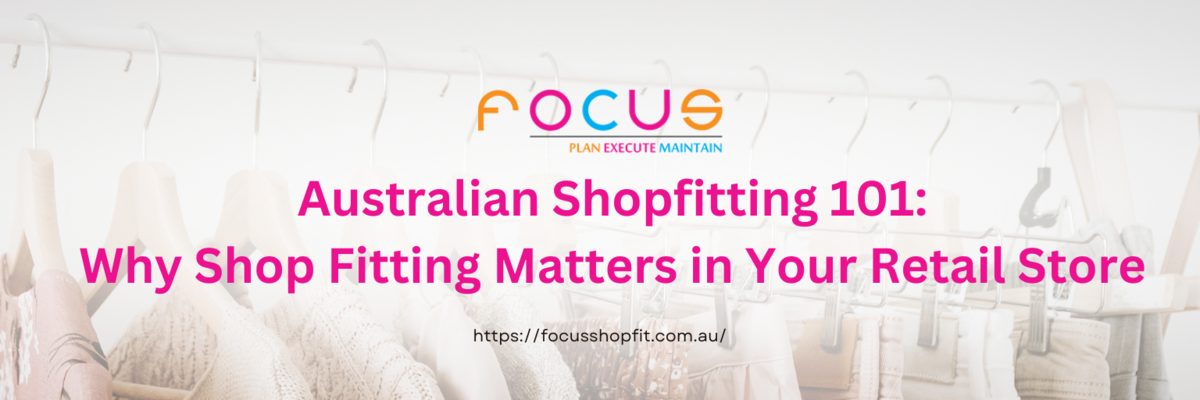
Understanding Shop Fitting
Shop fitting refers to the process of designing and arranging a retail space to optimize its layout, functionality, and aesthetics. It encompasses everything from shelving and lighting to signage and furniture, all tailored to enhance the shopping environment and showcase products effectively.
The Impact of Shop Fitting on Retail Success
- First Impressions Matter
As the old adage goes, "You never get a second chance to make a first impression." This rings especially true in retail. The moment a customer steps foot into your store, they form opinions based on what they see, feel, and experience. An intelligently designed shop fitout can captivate attention, instill confidence, and entice customers to explore further.
- Enhancing the Shopping Experience
Beyond aesthetics, shop fitting plays a pivotal role in shaping the overall shopping experience. A well-designed layout facilitates easy navigation, allowing customers to move seamlessly through the store and discover products effortlessly. Thoughtfully placed displays and fixtures guide the shopper's journey, encouraging interaction and increasing the likelihood of purchase.
- Reflecting Brand Identity
Your retail space serves as a tangible manifestation of your brand's identity and values. Effective shop fitting aligns with your brand aesthetics, communicating your unique story and positioning your products in a compelling light. Whether it's conveying luxury, minimalism, or sustainability, every design element should reinforce your brand narrative and resonate with your target audience.
- Maximizing Product Visibility
In a crowded marketplace, visibility is key. Properly positioned shelving, lighting, and signage draw attention to your merchandise, highlighting key offerings and prompting impulse buys. Strategic placement of products can also encourage cross-selling and upselling, driving incremental revenue and fostering customer loyalty.
- Adaptability and Flexibility
The retail landscape is constantly evolving, with changing consumer preferences and market trends. An effective shop fitout is not static but adaptable, capable of evolving with your business needs. Modular fixtures, movable displays, and versatile layouts empower retailers to refresh their space and accommodate new products or promotional campaigns seamlessly.
- Operational Efficiency
Beyond aesthetics and customer experience, shop fitting influences operational efficiency behind the scenes. Well-designed storage solutions, ergonomic layouts, and optimized workflows streamline day-to-day operations, reducing clutter, minimizing downtime, and enhancing staff productivity. A thoughtfully organized back-of-house area contributes to a smooth, efficient retail operation.
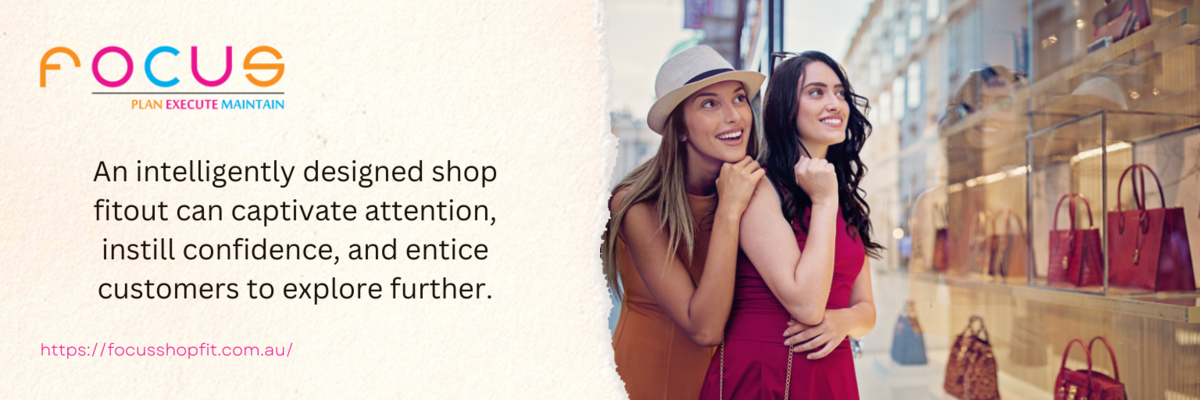
The Australian Perspective
In Australia, where retail is a vibrant and competitive industry, shop fitting holds particular significance. With a discerning consumer base and a strong emphasis on experiential retail, Australian retailers recognize the value of investing in high-quality shop fitouts that elevate the customer experience and drive sales.
From the bustling streets of Perth, Sydney, Adelaide, Darwin, Brisbane, Canberra, and Melbourne to the quaint coastal towns of Queensland, Australian retail spaces showcase a diverse range of shopfitting styles and approaches. Whether it's the sleek sophistication of luxury boutiques in Paddington or the laid-back charm of artisanal shops in Byron Bay, each retail environment reflects the unique identity of its brand and resonates with its target demographic.

Shop fitting as a Critical Differentiator
In the dynamic world of retail, where competition is fierce and consumer expectations are constantly evolving, shop fitting emerges as a critical differentiator. Beyond mere aesthetics, shop fitting influences every aspect of the retail experience, from first impressions to operational efficiency. Australian retailers, attuned to the nuances of their market, understand the profound impact of effective shop fitting on their bottom line.
As you contemplate the layout and design of your retail space, remember that shop fitting is not just about creating a visually appealing environment; it's about crafting a memorable experience that delights customers, reinforces brand identity, and drives sustainable business growth. So, whether you're embarking on a new shop fitout or revitalizing an existing space, embrace the art and science of shop fitting to create a retail environment that leaves a lasting impression.
Australian Shopfitting 101: Retail Fitouts from Concept to Creation
In the dynamic world of retail, where every inch of space and every design choice can make a significant impact on sales and customer experience, shopfitting emerges as a crucial aspect of success. In Australia, a country known for its vibrant retail landscape, the art of shopfitting has evolved into a sophisticated blend of creativity, functionality, and practicality. From concept to creation, the journey of an Australian retail fitout is a fascinating exploration of design innovation, project management prowess, and the seamless integration of technology and aesthetics.

Understanding the Concept
At the heart of every successful retail fitout lies a well-defined concept that aligns with the brand identity, target audience, and market trends. Whether it's a sleek boutique in Melbourne's bustling CBD or a cozy cafe nestled in Sydney's trendy suburbs, the concept sets the tone for the entire project. Australian shopfitters work closely with retailers, architects, and designers to translate abstract ideas into tangible designs that resonate with customers.
The concept phase is characterized by extensive brainstorming sessions, mood boards, and 3D renderings that breathe life into the vision. In Australia's competitive retail landscape, innovation is key. Shopfitters leverage the latest trends in interior design, sustainability, and technology to create immersive retail environments that captivate and engage shoppers.
Planning and Design
Once the concept is solidified, the focus shifts to detailed planning and design. Australian shopfitters meticulously analyze floor plans, traffic flow, and spatial dynamics to optimize every square meter of retail space. Sustainability is increasingly becoming a priority, with eco-friendly materials and energy-efficient solutions gaining traction across the industry.
In the design phase, every element is carefully curated – from lighting and fixtures to signage and shelving. Australian retailers understand the importance of storytelling in the retail environment, and shopfitters employ strategic design techniques to craft narratives that resonate with customers on an emotional level.
Collaboration is a cornerstone of the planning and design process. Shopfitters work hand-in-hand with retailers to ensure that the final design not only reflects the brand's values but also enhances the overall customer experience.
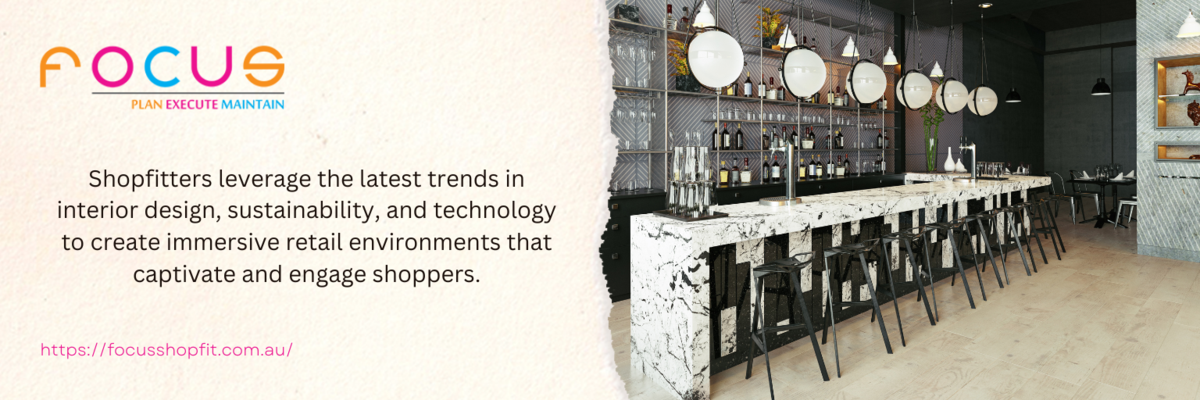
Implementation and Execution
With the design finalized, it's time to bring the vision to life. The implementation phase of a retail fitout is a meticulously orchestrated symphony of construction, installation, and finishing touches. Australian shopfitters are adept project managers, coordinating timelines, budgets, and resources to ensure seamless execution from start to finish.
Quality craftsmanship is non-negotiable in Australian shopfitting. From bespoke joinery to precision engineering, every element is crafted with care and attention to detail. Advanced manufacturing technologies and cutting-edge techniques enable shopfitters to achieve unparalleled levels of precision and customization.
As the fitout takes shape, communication is paramount. Regular progress updates and site meetings keep all stakeholders informed and ensure that the project stays on track. Flexibility and adaptability are essential qualities, allowing shopfitters to navigate unforeseen challenges and deliver exceptional results under tight deadlines.
Technology and Innovation
In the digital age, technology plays a pivotal role in shopfitting. From interactive displays to seamless checkout experiences, retailers are embracing innovative solutions to enhance the customer journey. Augmented reality (AR) and virtual reality (VR) are revolutionizing the way retailers visualize and prototype their store designs, allowing for real-time feedback and iteration.
Sustainability is another driving force behind technological innovation in shopfitting. Energy-efficient lighting, recycled materials, and smart building systems are increasingly integrated into retail fitouts, reducing environmental impact and lowering operating costs.
Australian shopfitters are also at the forefront of digital signage and experiential marketing, leveraging digital displays and interactive installations to create immersive brand experiences. With consumers craving authenticity and engagement, these technological innovations are instrumental in capturing attention and driving sales.

The Future of Australian Shopfitting
As retail continues to evolve, so too will the art of shopfitting. Australian shopfitters are embracing new technologies, materials, and design trends to stay ahead of the curve and deliver exceptional results for their clients. From sustainable practices to immersive experiences, the future of Australian shopfitting is bright and full of possibilities.
Shopfitting is a multifaceted discipline that encompasses creativity, innovation, and technical expertise. From concept to creation, the journey of a retail fitout is a collaborative endeavor that requires careful planning, meticulous execution, and a deep understanding of the retail landscape. With its rich history of design excellence and commitment to quality, Australia continues to be a global leader in the field of shopfitting, setting the standard for retail environments that inspire, delight, and engage customers.
Australian Shopfitting 101: Important Questions to Ask your Shopfitter
Shopfitting involves the careful consideration of layout, aesthetics, branding, and functionality to ensure that the space optimally showcases products and enhances the customer experience. It plays a crucial role in the success of retail businesses, as it directly impacts customer engagement, sales, and brand perception.

The importance of shopfitting in Australia
In the highly competitive Australian retail market, shopfitting is more important than ever. With the rise of online shopping, brick-and-mortar stores need to provide an experience that cannot be replicated online. An expertly designed and well-executed shopfitting project can create a unique and inviting atmosphere that attracts customers, encourages them to spend more time in the store, and ultimately leads to increased sales. Shopfitting also helps businesses establish and reinforce their branding, creating a cohesive and memorable identity that resonates with customers.
Questions to ask your potential shopfitter
- Experience and expertise: How long have you been in the shopfitting industry? Can you provide examples of similar projects you have completed in the past?
- References and testimonials: Can you provide references from previous clients? Do you have any testimonials or case studies that demonstrate your track record of success?
- Collaboration and communication: How do you involve the client in the design and decision-making process? What is your approach to communication and keeping the client informed throughout the project?
- Project timeline and deadlines: Can you provide a detailed timeline for the project? How do you handle unexpected delays or challenges?
- Budget and cost management: How do you ensure that the project stays within budget? Are there any additional costs or fees that the client should be aware of?
Asking these questions will help you gauge the shopfitter's experience, professionalism, and ability to meet your specific requirements.
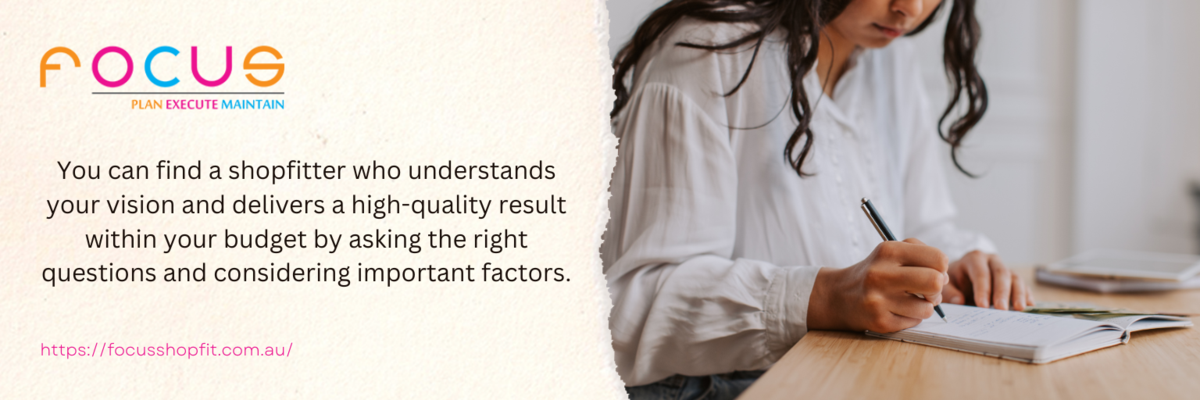
Understanding the shopfitting process
The shopfitting process typically involves several stages, starting with the initial consultation and design phase, followed by the fabrication and installation of fixtures and fittings, and ending with the final touches and handover. During the consultation phase, the shopfitter will work closely with the client to understand their vision, brand identity, and functional requirements. They will then create a design concept that incorporates these elements while ensuring optimal use of the available space.
Once the design is finalized, the shopfitter will proceed with the fabrication of fixtures and fittings. This may involve custom manufacturing or sourcing pre-made items, depending on the client's needs and budget. The installation phase is a critical step, as it requires careful coordination and attention to detail to ensure that all components are properly installed and aligned. Finally, the shopfitter will conduct a thorough inspection and hand over the completed project to the client.
Factors to consider when choosing a shopfitter in Australia
When choosing a shopfitter in Australia, there are several factors to consider to ensure you make the right decision:
- Experience and portfolio: Look for a shopfitter with a proven track record of successful projects and a diverse portfolio that showcases their versatility and expertise.
- Reputation and references: Check online reviews and ask for references from previous clients to get an idea of the shopfitter's reputation and client satisfaction.
- Communication and collaboration: Choose a shopfitter who values open communication and collaboration, as this will ensure that your vision and requirements are met throughout the project.
- Quality and craftsmanship: Examine the shopfitter's workmanship and attention to detail in their previous projects to ensure that the result will be of high quality.
- Budget and cost management: Discuss your budget with potential shopfitters and ensure that they can work within your financial constraints without compromising on quality.
By considering these factors, you can find a shopfitter who not only meets your requirements but also delivers a high-quality result within your budget.
Shopfitting materials and design options
Shopfitting offers a wide range of materials and design options to choose from, allowing businesses to create a unique and customized retail space. Some popular materials used in shopfitting include timber, glass, metal, acrylic, and laminates. Each material has its own characteristics and aesthetic appeal, so it's important to consider factors like durability, maintenance requirements, and brand identity when making a choice.
In terms of design options, shopfitting allows for a variety of layouts, fixtures, and lighting techniques to create different atmospheres and highlight specific products or areas. From open-plan layouts to more intimate and segmented spaces, the design possibilities are endless. Working closely with a professional shopfitter will help you explore these options and create a design that aligns with your brand and business goals.
How to budget for shopfitting
Budgeting for shopfitting involves considering both the upfront costs and the long-term return on investment. Here are some steps to help you create an effective budget:
- Define your requirements: Identify your specific needs, such as the size of the space, the desired fixtures and fittings, and any additional features you may require.
- Get multiple quotes: Obtain quotes from different shopfitters to compare prices and services. Ensure that the quotes include all relevant costs, such as design fees, materials, installation, and any additional services.
- Allocate contingency: Set aside a contingency budget to account for unexpected expenses or changes during the project.
- Consider long-term costs: While it may be tempting to choose the cheapest option, consider the long-term costs of maintenance, repairs, and potential future expansions. Investing in high-quality materials and professional workmanship can save you money in the long run.
- Negotiate and prioritize: If the quotes exceed your budget, discuss with the shopfitters to find ways to reduce costs without compromising on quality. Prioritize essential elements and consider phasing out non-essential components if necessary.
By carefully planning and budgeting for shopfitting, you can ensure that your investment delivers the desired results without straining your finances.
Shopfitting regulations and permits in Australia
Shopfitting in Australia is subject to various regulations and permits to ensure safety, accessibility, and compliance with building codes. These regulations may vary depending on the location and type of retail space. It is essential to work with a shopfitter who is knowledgeable about these regulations and can guide you through the permit application process.
Some common regulations and permits that may apply to shopfitting projects include:
- Building permits: These permits are required for structural changes, electrical work, plumbing, and other alterations that affect the building's integrity.
- Occupancy permits: These permits certify that the retail space meets fire safety, accessibility, and other requirements necessary for public occupancy.
- Signage permits: If your shopfitting project includes external signage, you may need to obtain permits to ensure compliance with local signage regulations.
- Health and safety regulations: Shopfitters must adhere to health and safety regulations to protect workers and customers during the construction and installation phases.
Failure to comply with these regulations can result in penalties, delays, or even closure of the retail space. Therefore, it is crucial to work with a shopfitter who understands and follows all applicable regulations.
Benefits of hiring a professional shopfitter
Hiring a professional shopfitter in Australia offers numerous benefits that can significantly impact the success of your retail business. Here are some advantages of working with a professional:
- Expertise and experience: Professional shopfitters have the knowledge, skills, and experience to deliver high-quality results that meet your specific requirements.
- Time and project management: Shopfitters takes care of all aspects of the project, from design to installation, allowing you to focus on running your business.
- Access to resources and suppliers: Professional shopfitters have established relationships with suppliers and access to a wide range of materials, ensuring that you have access to the best options for your project.
- Compliance with regulations: Professional shopfitters have a thorough understanding of building codes and regulations, ensuring that your project is compliant and avoids any legal issues.
- Increased efficiency and cost-effectiveness: Professional shopfitters can optimize the use of space, recommend cost-effective solutions, and complete the project efficiently, saving you time and money.
By hiring a professional shopfitter, you can be confident that your shopfitting project will be executed to the highest standards and deliver the desired results.

Critical aspect
Shopfitting is a critical aspect of running a successful retail business in Australia. It not only creates an attractive and functional environment for customers but also helps establish and reinforce your brand identity. By asking the right questions and considering important factors, you can find a shopfitter who understands your vision and delivers a high-quality result within your budget. Working with a professional shopfitter ensures compliance with regulations, access to the best resources, and efficient project management. Invest in shopfitting to create a retail space that stands out in the competitive Australian market and attracts customers to your business.
Australian Shopfitting 101: What is the Role of Display and Fitouts in a Retail Store?
Shopfitting plays a crucial role in the success of a retail store in Australia. It involves the design, construction, and installation of all elements within a retail space, including displays and fitouts. In this article, we will explore the importance of store displays and fitouts, the benefits of effective shopfitting, key components of a successful shopfitting project, factors to consider when planning a shopfitting project in Australia, different types of store displays and fitouts, top shopfitting trends in the Australian retail industry, shopfitting tips for maximizing sales and customer experience, and the significance of hiring a professional shopfitting company in Australia.

The importance of store displays and fitouts
Store displays and fitouts are vital for creating an appealing and functional retail environment. They serve as the first point of contact between the store and its customers, influencing their first impression and overall shopping experience. A well-designed display can attract attention, spark interest, and encourage customers to explore the store further. Likewise, a thoughtfully planned fitout ensures that the store layout is optimized for efficient customer flow, maximizes the use of available space, and creates a comfortable and engaging atmosphere.
Effective store displays and fitouts also contribute to brand identity and image. They help convey the store's unique selling proposition, create a cohesive visual language, and establish a strong connection with the target audience. By aligning the store's aesthetics, layout, and product presentation with its brand values, customers are more likely to perceive the store as trustworthy, professional, and reputable.
Benefits of effective shopfitting in a retail store
Implementing effective shopfitting strategies in a retail store can yield numerous benefits. Firstly, it improves the overall shopping experience for new and regular customers. A well-designed store layout and display arrangement can guide customers through the store, making it easy for them to find what they need and discover new products. This not only increases customer satisfaction but also encourages repeat visits and word-of-mouth recommendations.
Secondly, effective shopfitting can boost sales and profitability. By strategically placing high-margin products or creating attractive product displays, retailers can influence customer purchasing behavior and increase average transaction value. Additionally, a visually appealing and well-organized store attracts more foot traffic, leading to increased opportunities for sales and revenue growth.
Furthermore, effective shopfitting can improve operational efficiency. A properly designed fitout ensures that space is utilized optimally, reducing clutter and congestion. This allows staff to move around more freely, serve customers efficiently, and maintain a clean and organized store environment. Improved operational efficiency translates into cost savings and better utilization of resources.
Key components of a successful shopfitting project
A successful shopfitting project requires careful planning and consideration of several key components. The first component is understanding the target audience and their preferences. By gaining insights into the demographics, shopping habits, and preferences of the target market, retailers can tailor their store displays and fitouts to meet customer expectations and desires.
The second component is creating a cohesive and consistent brand experience. The store's design, layout, and displays should reflect the brand's identity and values. Consistency in branding helps build brand recognition and loyalty, making customers feel connected to the store and its offerings.
Another crucial component is functionality. A well-designed store layout should prioritize ease of navigation, accessibility, and product visibility. The placement of displays, shelving units, and signage should be strategically planned to facilitate a smooth and enjoyable shopping experience.
Lastly, a successful shopfitting project requires effective project management. This involves setting clear objectives, establishing a realistic timeline, and coordinating various stakeholders such as designers, contractors, and suppliers. Regular communication and monitoring of progress are essential to ensure the project stays on track and is completed within budget.

Factors to consider when planning a shopfitting project in Australia
When planning a shopfitting project in Australia, there are several factors that retailers should consider. Firstly, it is important to comply with local regulations and building codes. Each state may have specific requirements related to store design, safety standards, and accessibility. Retailers should ensure that their shopfitting project adheres to these regulations to avoid any legal issues or penalties.
Secondly, considering the local climate and environment is crucial. Australia experiences a wide range of climates, from hot and humid to dry. Retailers should choose materials, finishes, and lighting solutions that can withstand the local climate and minimize energy consumption.
Additionally, it is essential to factor in the target market and cultural context. Australia is a diverse country with various cultural backgrounds and preferences. Retailers should take into account the cultural sensitivities and preferences of their target audience when designing store displays and fitouts. This ensures that the store environment is inclusive and appealing to a wide range of customers.
Lastly, retailers should consider the scalability and adaptability of their shopfitting project. As retail trends and consumer preferences evolve, the store may need to undergo updates or modifications. Planning for scalability and adaptability from the beginning reduces future costs and disruptions to the store's operations.
Different types of store displays and fitouts
There are various types of store displays and fitouts that retailers can choose from, depending on their specific needs and objectives. Some common types include:
- Gondola Shelving: Gondola shelving is a versatile and widely used display solution. It consists of freestanding units with adjustable shelves that can be configured to accommodate different product sizes and categories. Gondola shelving allows for easy customization and rearrangement, making it ideal for stores that frequently change their product offerings.
- Feature Walls: Feature walls are eye-catching displays that highlight specific products or promotions. They are typically located in prominent areas within the store and are designed to grab attention and generate interest. Feature walls can be customized with various materials, such as graphics, mirrors, or interactive elements, to create a visually striking and engaging display.
- Shop-in-Shop Displays: Shop-in-shop displays are mini-stores within a larger retail space. They provide a dedicated area for specific brands or product categories, allowing retailers to create a unique and immersive shopping experience. Shop-in-shop displays often have their distinct design and branding, creating a sense of exclusivity and differentiation.
- Digital Signage: Digital signage involves the use of digital screens to display dynamic and interactive content. It can be used to showcase product information, promotions, or even provide entertainment to customers. Digital signage attracts attention and creates a modern and technologically advanced in-store environment.
- Lighting and Ambience: Lighting plays a crucial role in store displays and fitouts. It can be used to highlight products, create focal points, and evoke specific moods or emotions. Retailers can utilize different lighting techniques, such as spotlights, ambient lighting, or color-changing LEDs, to enhance the visual appeal of their stores.
Shopfitting tips for maximizing sales and customer experience
To maximize sales and customer experience through shopfitting, retailers can follow these tips:
- Know Your Target Audience: Understand your target audience's preferences, shopping habits, and needs. Tailor your store displays and fitouts to meet their expectations and create a personalized shopping experience.
- Create a Clear Store Layout: Design a store layout that is easy to navigate and allows customers to find products quickly. Use signage and clear pathways to guide customers through the store, ensuring a smooth and efficient shopping experience.
- Focus on Visual Merchandising: Pay attention to visual merchandising techniques, such as product placement, color coordination, and focal points. Create visually appealing displays that attract attention and highlight key products or promotions.
- Utilize Lighting Effectively: Lighting can dramatically impact the ambiance and visual appeal of a store. Use a combination of task lighting, accent lighting, and ambient lighting to create a well-lit and inviting atmosphere.
- Stay Updated with Trends: Keep up with the latest shopfitting trends and incorporate them into your store displays and fitouts. Staying relevant and appealing to customers is crucial for long-term success.
Hiring a professional shopfitting company in Australia
When it comes to shopfitting projects in Australia, hiring a professional shopfitting company is highly recommended. Professional shopfitters have the expertise, experience, and resources to deliver high-quality shopfitting solutions that align with your specific requirements and objectives.
A professional shopfitting company will work closely with you to understand your brand, target audience, and business goals. They will provide expert advice on store design, layout, and display options, ensuring that your store stands out and creates a memorable shopping experience.
Additionally, professional shopfitters have established relationships with suppliers, contractors, and industry professionals. This allows them to manage the entire shopfitting project efficiently, from initial concept development to final installation. They will handle all aspects of the project, including permits, logistics, and compliance with local regulations, saving you time and effort.
By hiring a professional shopfitting company, you can have peace of mind knowing that your shopfitting project is in capable hands. Their attention to detail, commitment to quality, and focus on customer satisfaction will help you achieve a successful and visually stunning retail store.

The impact of display and fitouts on the success of a retail store in Australia
In conclusion, display and fitouts play a crucial role in the success of a retail store in Australia. Effective shopfitting enhances the overall shopping experience, boosts sales and profitability, and improves operational efficiency. It involves careful planning, consideration of key components, and adherence to local regulations and cultural context.
By following shopfitting tips and hiring a professional shopfitting company, retailers can maximize sales, customer satisfaction, and brand loyalty. The impact of display and fitouts on the success of a retail store in Australia cannot be underestimated, making shopfitting a critical aspect of the retail industry.

